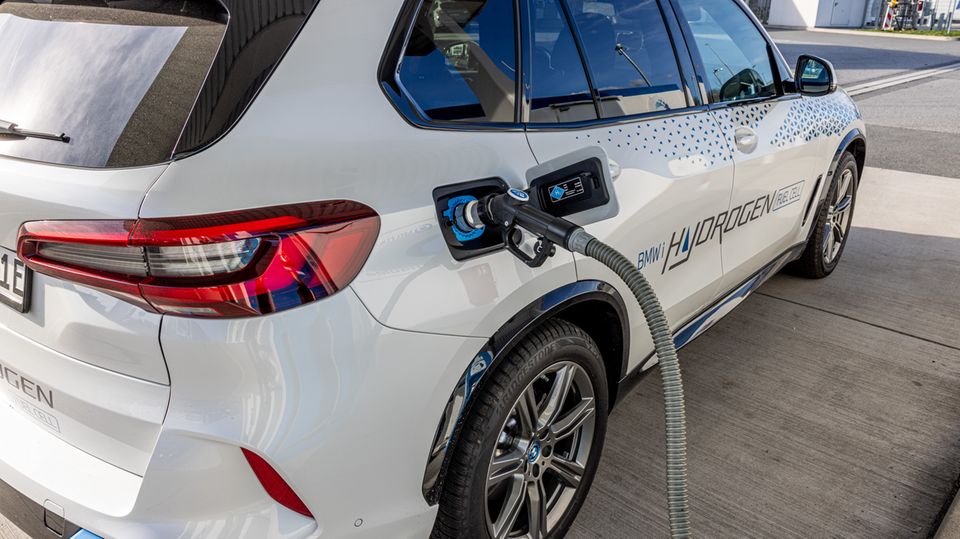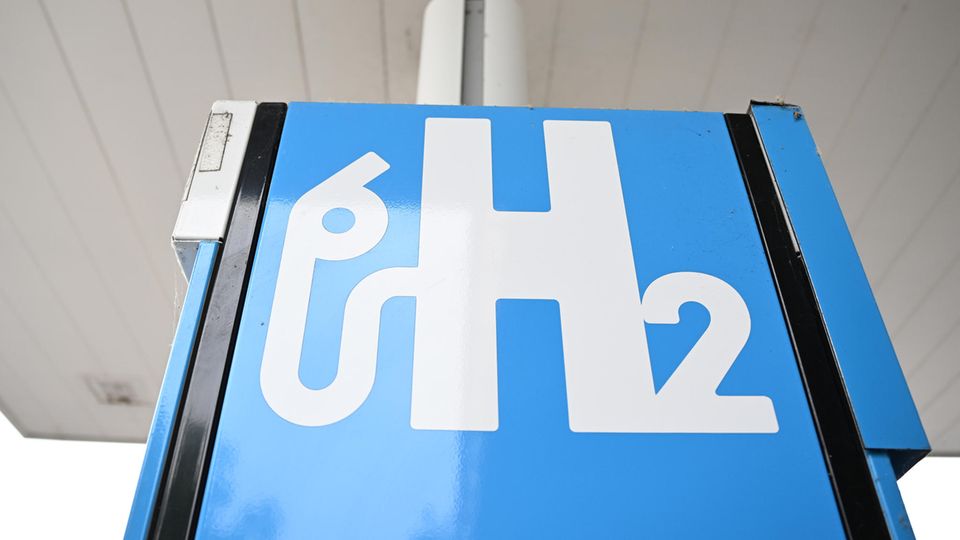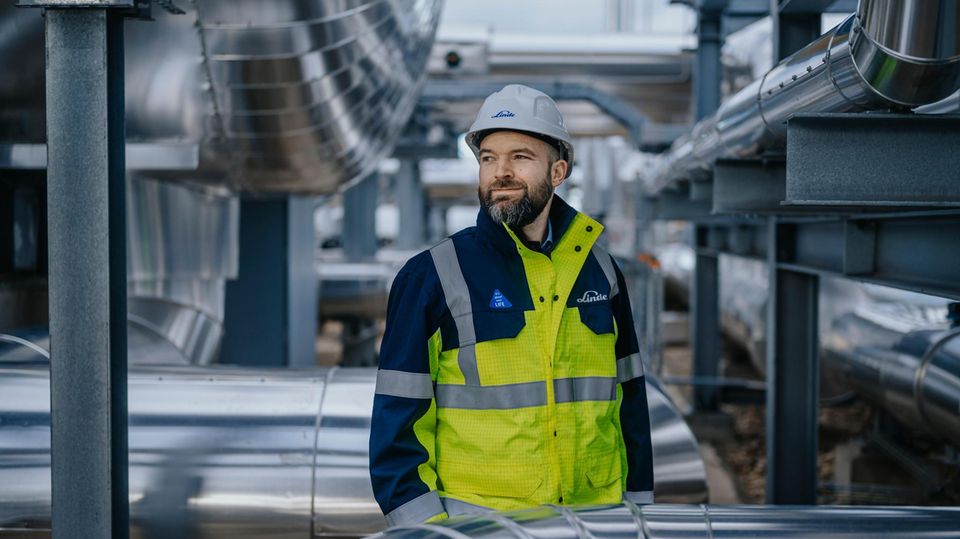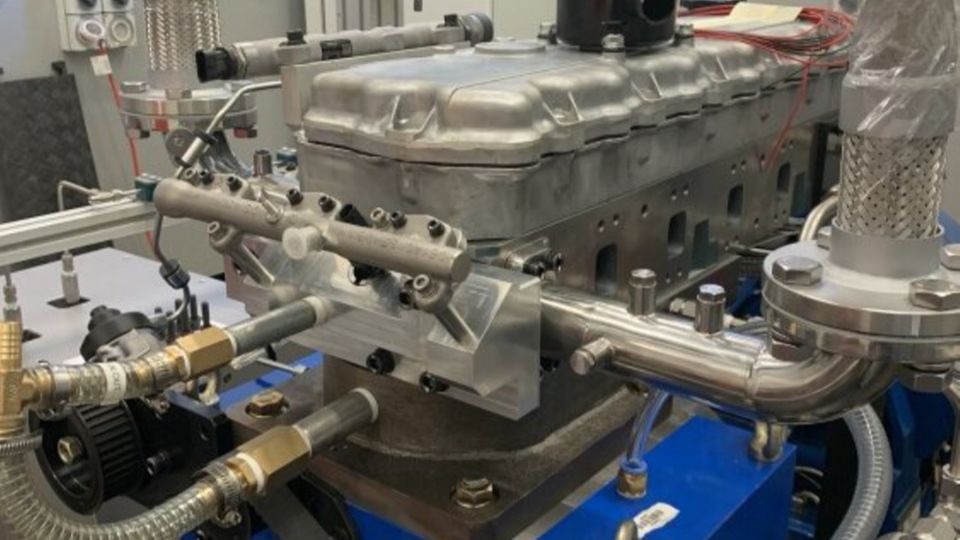prototype
BMW iX5 Hydrogen in the practical test: Hydrogen now?
The BMW iX5 Hydrogen is used for research into alternative fuels
© Global Press
BMW is represented in the top ten most valuable global brands. It is not for nothing that the slogan “The joy of driving” has lost any of its relevance. The Munich-based company has now launched a hydrogen pilot series of the BMW iX5 Hydrogen. A test drive.
Jutta Bernhard
“As a versatile energy source, hydrogen will play a key role in the energy transition and thus in climate protection,” says Oliver Zipse, CEO of BMW AG. According to Zipse, this potential should be used to accelerate the transformation of the mobility sector.
In the fuel cell, the chemical reaction takes place between the gaseous hydrogen from the two hydrogen tanks and the oxygen from the ambient air. Toyota Motor Corporation is a long-standing partner of BMW and produces and supplies the fuel cells.
The SUV delivers up to 295 kW/401 hp. The continuous electrical output of the fuel cell system is 125 kW/170 HP. The hydrogen tank has a capacity of six kilograms of hydrogen (gaseous). The range is stated by the manufacturer as 504 kilometers according to WLTP.
One thing is clear: a hydrogen SUV with such eye-catching foiling attracts attention – and you can talk about it all the time. The belief in hydrogen is deeply rooted among the population.
The BMW iX5 Hydrogen drives like an electric car – and spits out water vapor
The workmanship is typical of BMW at a premium level. There is plenty of connectivity on board and there is space for five passengers. A huge trunk impresses and the feeling of luxury doesn’t take long to arrive once you’ve sat down on the leather chairs.
In regular operation, the drive technology is noticeably inconspicuous; you might think you are driving a classic BMW electric SUV. The sprint from zero to one hundred kilometers per hour is completed in under six seconds, the 2.5 ton hydrogen car takes off like nothing! The Munich is as quiet as a purely electric vehicle, the accelerator pedal reacts without delay and when you let off the pedal, recuperation occurs when decelerating. The display of the remaining mileage varies depending on your driving style; we can easily get from 180 kilometers remaining to 225 kilometers with the appropriate driving style.

Hydrogen filling stations are rare in Germany – but they do exist.
© Global Press
During the following 300 kilometer drive on country roads and motorways, we always keep an eye on the consumption and – secretly – actually have a bit of range anxiety. However, this turns out to be completely unfounded. In the WLTP cycle we consume 1.21 kilograms of hydrogen per 100 kilometers. Of course, before we set off, we used the BMW app to find out where hydrogen filling stations were available in the area.
And we are surprised: the selection is not bad at all! Within a radius of 40 kilometers, starting from the Loreley, there are functioning and easy-to-use gas stations in Koblenz, Wiesbaden, Frankfurt and at the destination in Hirschberg.
The tap is quickly connected to the vehicle and the unlocking process begins after confirming the start button at the hydrogen filling station. According to the display, the pressures are checked and after a short time the refueling process is completed in under five minutes. A range of around 400 kilometers costs exactly 64.20 euros. The pilot is completely environmentally friendly, as the only emission from the BMW i5X Hydrogen consists of water vapor.
Does hydrogen really have a future?
After a week of practical testing, surrounded by plenty of gas stations, many advantages of hydrogen and fuel cell technology become apparent. But there are also dark sides: Hyundai was a pioneer with the Nexo model with hydrogen drive. Perhaps the Koreans were present on the German market too early with this technology? In any case, the registration numbers of the Nexo are beyond good and bad; the hydrogen station on the premises of Hyundai Motor Europe’s headquarters in Offenbach has already been permanently closed again.
Renowned trade magazines such as Automobilwoche are currently dedicating entire special supplements to the topic and a premium manufacturer like BMW will think twice about producing a BMW iX5 Hydrogen in small series.




